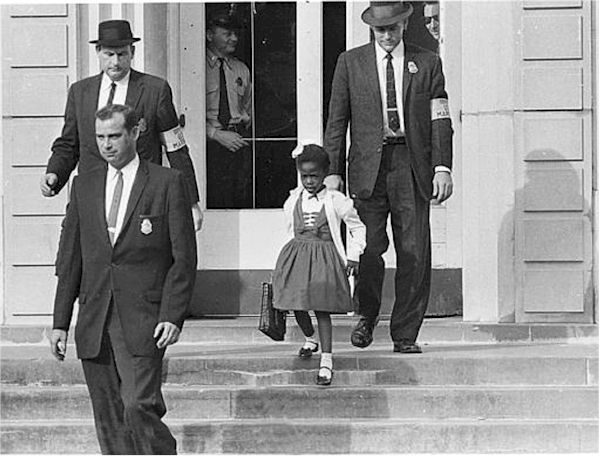What Black Children Lost

“What did black children lose when they moved to majority-white schools and classrooms taught by white teachers?”
Opening an institute on racially integrated classrooms in TC’s Cowin Auditorium with that rhetorical question, Amy Stuart Wells said black children experienced desegregation as a type of “second-class integration” that offered access to more resources and opportunities and was better than forced segregation. But when it came to black students’ self-esteem, desegregation was usually less supportive than the all-black schools they had left.
By design, Wells said, instruction in desegregated schools did not – and in many schools doesn’t now – “consider the mores, customs and traditions of the black community.” Successful black role models were not to be found. Examining what was lost, Wells said the Emory University historian Vanessa Siddle Walker “talks about interpersonal caring, a school ethos of caring, a caring about students’ success. She talks about multiple intelligences and different ways of understanding students’ ability, and how different students benefited from the different activities and ways in which they could present their knowledge to teachers.”
Most important, Walker writes that black students lost the opportunity for democratic participation in their schools and teachers who had “used those schools to reconstruct the messages that black students were receiving outside of the schools.” Walker writes that the black experience in newly desegregated schools “had a way of entering their hearts and minds, [and] stole from the Negro children the motivation that makes them feel good,” and that black children lost “the possibility and a positive message about who they were and who they could become.”
At the same time, the formerly all-white schools that now enrolled black students were “re-segregating” students through “second-generation segregation” mechanisms in which students were grouped by race into separate and unequal classrooms within otherwise desegregated public schools. In addition to legal challenges, local and state school boards have also used charter schools and, in some places, redrawn school districts to enable the continued racial segregation of students.
After this re-segregation within schools phase, by the late 1980s, desegregation policies were being dismantled, especially in the South, as Federal courts released hundreds of local school districts from orders to racially balance their schools, , Wells said.
While discussions of race may be taboo no longer, white teachers are working in classrooms that are increasingly diverse, making the task of reaching each student individually all the more difficult.
Coupled with this trend of re-segregation is the ever-increasing influx of students from around the world. Thus, as of 2014, the white, non-Hispanic public school student population in the U.S. is now less than 50 percent of the total. Meanwhile, the teaching force has remained overwhelmingly white. While discussions of race may be taboo no longer, white teachers are working in classrooms that are increasingly diverse, making the task of reaching each student individually all the more difficult, Wells said.
In today’s re-segregated classrooms and schools, students of color are more likely than whites to be concentrated in non-diverse, poorly resourced schools in communities lacking political support for public education, Wells said. Even those who attend diverse schools are more likely than whites to be disciplined, punished or expelled, assigned to less-challenging or special education classes, or denied bilingual educational services. These are symptoms of the re-segregation since the early 1980s that has eroded the academic and social benefits to white and students of color that resulted from Brown.
Three TC doctoral students who work with Wells on her research followed this introduction by highlighting the potential educational benefits of diverse schools and classrooms if educators are better prepared to teach students of different racial, ethnic, and socio-economic backgrounds.
The Institute, which Wells hopes to repeat next year, is an opportunity to “really think about how racial literacy, equity, pedagogy, and culturally sustaining leadership can help us to do diverse schools well,” said doctoral student Diana Cordova-Corbo, as she wrapped up the opening session.
Related Articles
Diverse Approaches to Teaching Diversity: The plenary sessions in Cowin Conference Center
Teaching for the New Majority: A TC institute reimagines education for racially diverse classrooms
Published Thursday, Aug 25, 2016